Denver Botanic Gardens
The second road trip was to take us to Carlsbad, New Mexico, but before that, my friend suggested a tour around
the Denver Botanic Gardens.
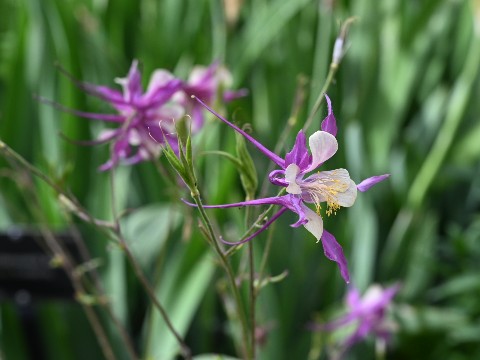
The Columbine (Aquilegia coerulea) is the state flower of Colorado, but sadly, its name is forever linked
to the Columbine High School shootings in April 1999.
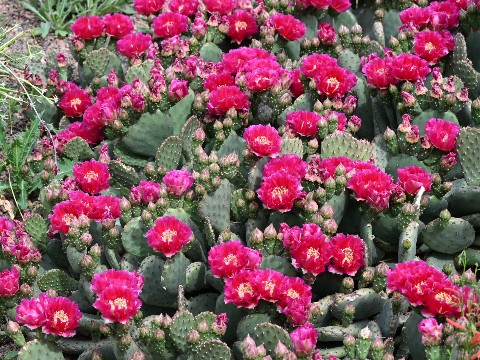
The Prickly Pear cactus (genus Opuntia) is endemic to the south-western United States.
We saw a great many of them on our travels, including many covered in flowers like this one in the Botanic
Gardens.
Carlsbad Caverns
When I lived in England, I occasionally went caving – exploring caves with wire ladders and acetylene
lamps.
At the time I lived in Stockport, and the caving area of the Peak District was only a short drive away.
And the friend who introduced me to caving often talked about Carlsbad Cavern – then the longest known cave system in
the world.
Carlsbad is in the south-eastern corner of New Mexico, and getting there meant a very long all-day drive.
We stopped for lunch in Las Vegas – no, not that Las Vegas – Las Vegas, New Mexico, a small town
about 80km from Santa Fe.
And shortly before Carlsbad, we passed through Roswell, where every second business seemed to be trying to exploit
the town’s notoriety as a supposed hotspot for UFO activity (for the record, we didn’t see any
UFOs).
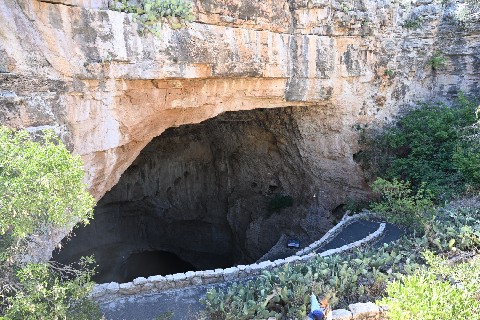
The entrance to the cave is enormous, as can be seen from the size of the trees in the photo.
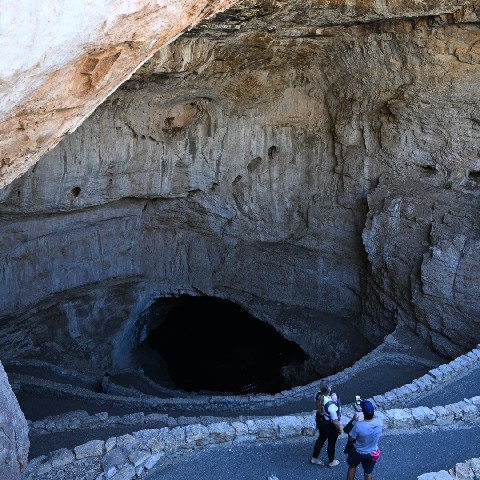
The opening continues downwards at a steep angle, but the zigzag path makes it easier for walkers.
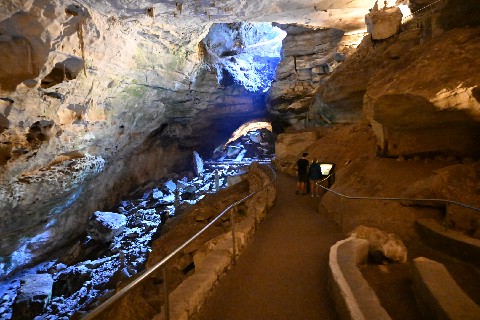
Close to the entrance, the last bits of daylight show as blue in the photos.
From here on, photography becomes much more difficult.
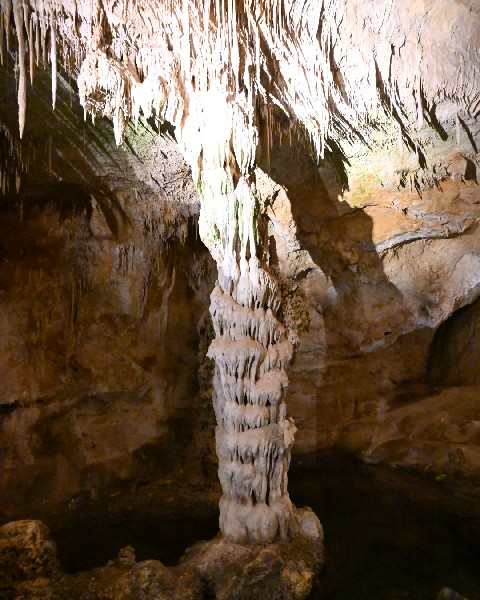
I mostly used the lighting provided in the cave – flash tended to flatten out the images (and in any case,
my flash isn’t powerful enough to illuminate the enormous spaces in this cave).
But that meant it was hard to control the exposure for all areas of the photo.
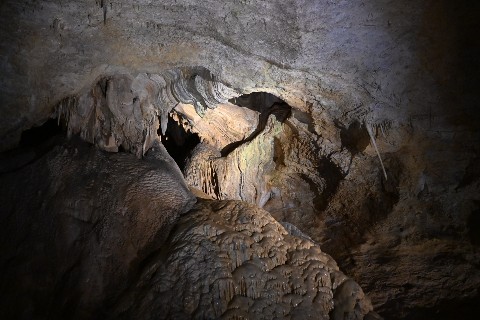
The cave lighting was often used to good effect, as in this location, with different types of stalactite and a
large mound of flowstone.
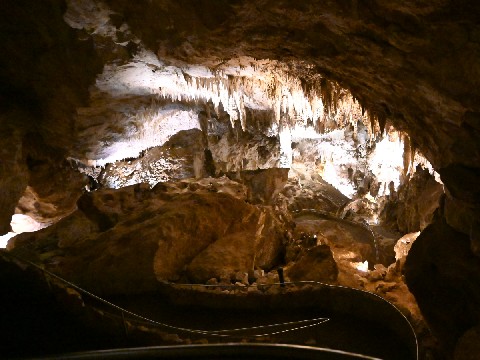
It’s difficult to convey the size of the cave in these photos.
You can just make out the handrail of the official track through the cave in the background on the right side of
this photo.
And this is before we get to what they call the “Big Room” – a vast chamber over 1200 metres
long, nearly 200 metres wide and 78 metres high at its highest point.
Sadly, none of my photos from beyond this point are of publication quality, so I’ll have to rely on my
words from here on.
And my lasting impression is that I was just blown away by the sheer scale of the cave complex.
I have been down Oxlow Cavern in England – one of the deepest in the country and only accessible to serious
cavers.
At the bottom is an enormous chamber, so large that our acetylene lamps couldn’t illuminate the whole cave,
but the Big Room at Carlsbad is more than 10 times as large in both length and width.
Size isn’t everything, but in a cave, it’s awe-inspiring.
White Sands
From Carlsbad, we headed west over the hills again, passing through the picturesque town of Cloudcroft, and it was
from just after there that we got our first glimpse of the White Sands National Park at Alamogordo.
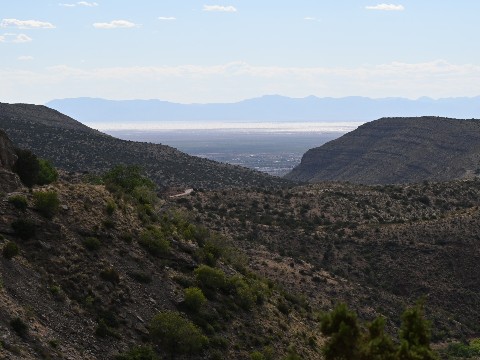
The shimmering band of white in the distance seemed quite unearthly.
And that was before we got up close.
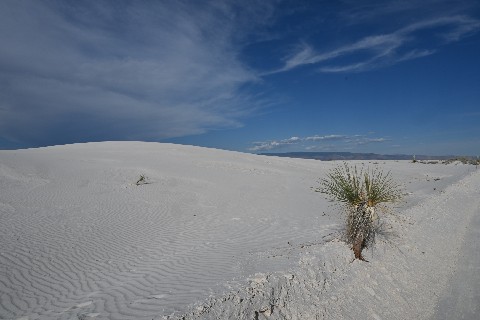
The White Sands are … white.
The dunes aren’t high, but once you’re amongst them you can see little else, and the effect is quite
surreal.
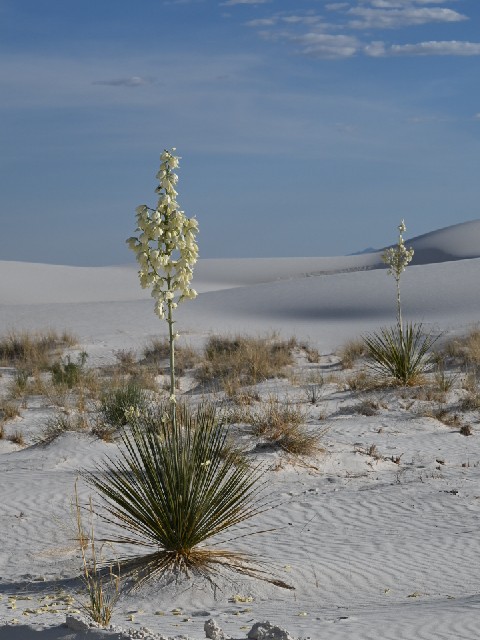
The yucca flowers (Yucca filamentosa – I think), white flowers on a white background, are
particularly beautiful.
And if the name Alamogordo rings a bell, that’s probably because it was the site of the first test of a
nuclear weapon.
The “Trinity” test of an atomic bomb in July 1945, prior to the dropping of the bombs on Hiroshima
and Nagasaki, was conducted at the missile testing ground just to the north of the White Sands.
Back to Denver
That just left the long drive back to Denver, stopping for lunch (more good Mexican food) in Santa Fe, and a last
day of sightseeing around Denver itself.
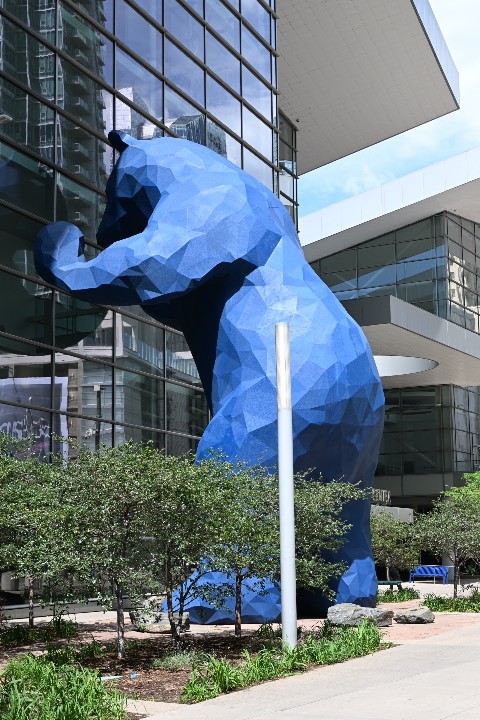
The Big Blue Bear, as it’s popularly known, is an 18 metre high sculpture outside the Colorado Convention
Centre (sorry about the pole – I couldn’t get a better angle because of the direction of the sun).
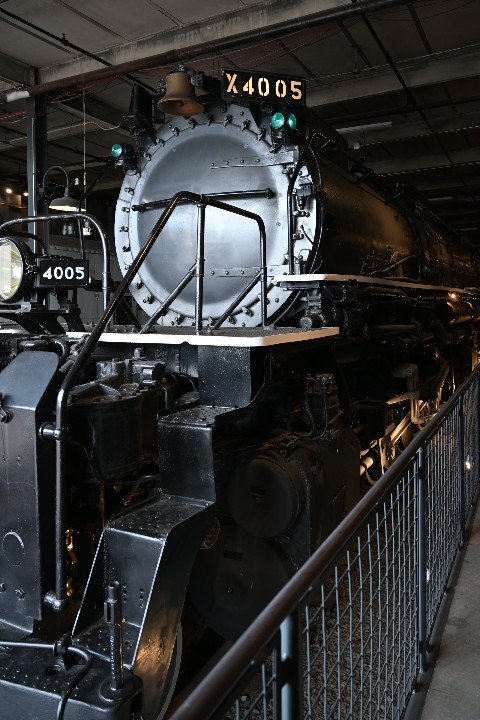
And just for a last dose of trains, this is a Union Pacific “Big Boy”.
These were the largest steam locomotives ever built, and I remember reading about them as a child.
Several are now preserved, and one of these is in the Forney Museum of Transportation in Denver.
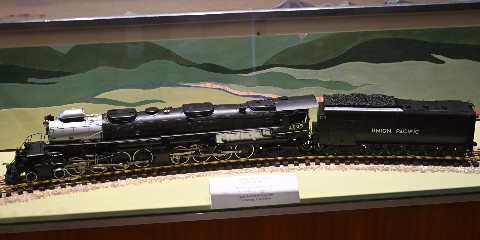
It was impossible to get far enough back to get a photo of the entire locomotive, but fortunately the museum
provides a model so the public can better understand what they are seeing.
Looking back over the two very long drives of this trip – just because there are no photos worth displaying
from those journeys, I wouldn’t want anyone to get the impression that the journeys were boring.
The vast open spaces of south-eastern New Mexico are very different from the vast open spaces of western Colorado,
and different again from all of the other types of countryside we passed through during our many hours on the
road.
I consider myself very fortunate to have a friend who was so knowledgeable about the area (he was born in New
Mexico) and so willing to show it off to an outsider.